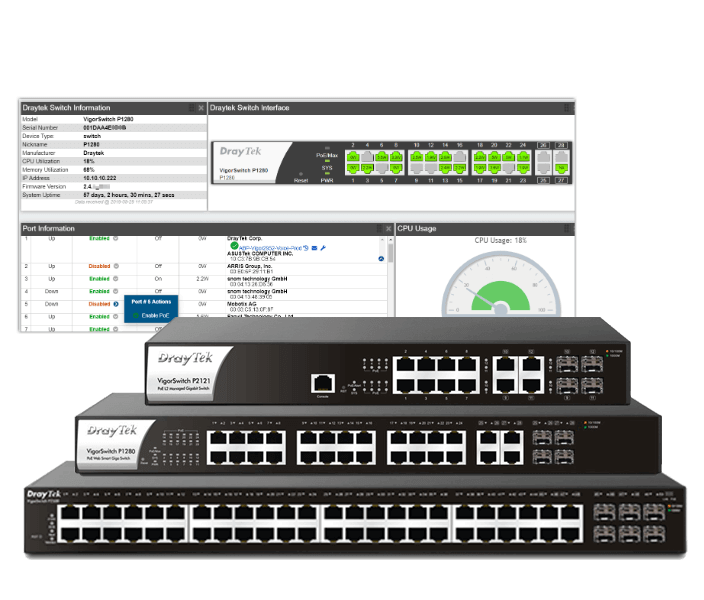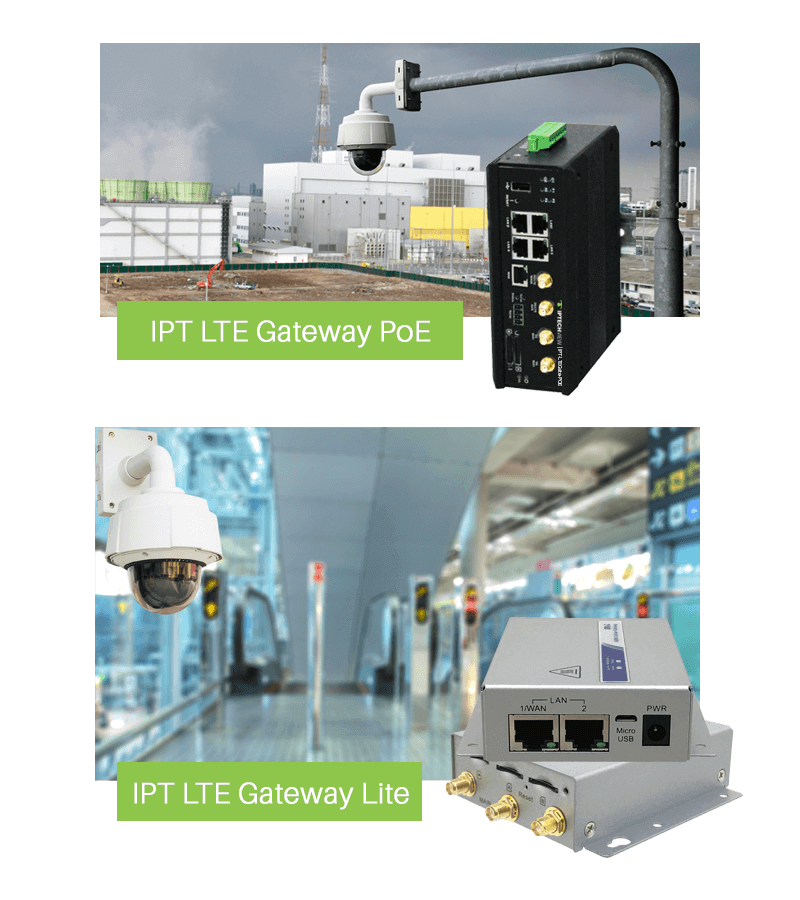What Is A PoE Switch And How Does It Work
PoE, or Power over Ethernet, was a technology developed by Cisco in the year 2000 for connecting their IP Phones. Though, later, this technology was recognized and had a few iterations.
The first standard of PoE (IEEE 802.3af) was released in 2003. This was also known as Type 1 PoE. Then, it was upgraded to Type 2, and PoE+ (IEEE 802.3at) was released in 2009. Then Type 3 or 4PPoE++ (IEEE 802.3bt) was released in 2011, and it was amended, and Type 4 was released in 2018.
What Is A PoE Switch?
First, let’s see what a Switch is. A Switch or a Networking Switch is an equipment that enables devices to communicate with one another on the same network. This allows those devices to connect with each other, send data, print documents, or store files on a shared storage. In this case, all the connected devices need their own power source.

Now, PoE stands for Power over Ethernet. This technology sends data and delivers power from a Power Sourcing Equipment (PSE) to IoT devices such as IP phones, security cameras, wireless access points, etc., using the copper wires in an ethernet cable. This eliminates the need for a separate power source for said devices.
These devices that are connected to a PSE over an ethernet cable are called Powered Devices (PD). PoE Switch is such a Power Sourcing Equipment (PSE) that helps the user connect their IoT devices to their network without any external power.
How Does A PoE Switch Work?
In order to understand how a PoE Switch works, we must first know how Power over Ethernet (PoE) works.
An ethernet cable has 4 pairs of twisted pair wires, which means 8 wires in total, and these wires are usually unarranged. When you rearrange them and connect them with an RJ45 jack according to the wiring standards, the wires in pins 1, 2, 3, and 6 will transfer data to the IoT devices, while the wires in pins 4, 5, 7, and 8 will provide power.
| Pin Number | Function |
| 1 | Data Transfer |
| 2 | Data Transfer |
| 3 | Data Transfer |
| 4 | Power Transfer |
| 5 | Power Transfer |
| 6 | Data Transfer |
| 7 | Power Transfer |
| 8 | Power Transfer |
Now, to get both data and power for your IoT devices, you have to have a Power Sourcing Equipment (PSE) like a PoE Switch. Connecting the PoE Switch and the IoT device with the same RJ45 ethernet cable will enable the device to power up without an external power source.
Active and Passive PoE Switch
An Active PoE Switch is the intelligent version of a PoE Switch. Different devices require different amounts of power. This device understands how much power the PD (Powered Device) needs and sends it accordingly.
On the other hand, a Passive PoE Switch doesn’t understand how much power the PD needs and always sends the same amount of power. If the received power doesn’t meet the requirement of the PD, the connected device won’t work. And if it sends too much power, then the connected equipment may get damaged permanently.
PoE Switch VS Standard Switch
Let’s create a scenario where you have to connect six IP Phones in three different rooms. If you use a Standard Switch -

- You have to spend money on the ethernet cable
- You have to install outlets for each IP Camera, IP Phone or WiFi Access Point where ever you want these devices. The most costly aspect is that if you do not have and outlet in these area to connect a power adapter you will need to get a licenses electrician to bring in conduit and cables. Outlets need to pass code and cost a lot more than a low-voltage POE cable.
- As a result, you spend more time and money
- And if you ever want to change the positions of those IP end-points, Phones or Security Cameras, you have to spend even more time and money on the infrastructure again.
Overall, this setup is very costly and inconvenient.
On the other hand, if you use a PoE Switch for the same scenario, you only have to spend your resources on the ethernet cables, and you are done. It is as easy as that. It saves you a lot of time and money on the infrastructure. Not to mention that this setup is very flexible, and you can change it any time you want without any hassle.
What is PoE Port?
PoE ports are also called PSE ports. PSE or PoE ports usually include RJ45, SFP, and SFP+. These are the ports used to connect the PoE devices with the PDs (Powered Devices). PoE Switches come with at lfeast 4 to up to 48 ports.
Converting a Non-PoE Switch
If your switch happens to be a standard switch (i.e., Non-PoE), then there is a way to get the benefits of having a PoE device by converting your current switch. You just need another device called a PoE Injector, which works like a translator between your switch and your IoT device.
This PoE Injector connects with your switch and your IoT device using different ethernet cables and takes power from an outlet through a power cable. Now, your IoT device can get both the power and the data it needs.
Frequently Asked Questions
Q1. What is the purpose of a PoE Switch?
Ans: A PoE Switch not only sends data to your IoT devices but also power, which is very convenient for the user.
Q2. What is the difference between a PoE Switch and a normal Switch?
Ans: A Poe Switch can power your devices, which a standard switch cannot.
Q3. Does PoE provide AC or DC?
Ans: PoE provides 48V DC
Q4. What is PoE Switch used for?
Ans: PoE Switches are used for powering security cameras, lighting, IP Phones, and other IoT devices.
Q5. How many watts does a PoE Switch provide?
Ans: A PoE Switch provides from 15.4 watts all the way up to 100 watts.
Q6. Does PoE save electricity?
And: Yes, it does save electricity. When you use PoE, it eliminates other in-building operation and maintenance costs, which also saves on energy costs.
Q7. What is a managed POE Switch?
Managed POE Switches for IP Cameras are great because they can do more than just provide network connectivity. It is possible for the partner to assign the cameras or devices on this type of switch to special VLANS and route traffic to dedicated routers on a managed layer three switch. It is also possible on higher end switches like Draytek Cloud Managed POE switches that are IPTECHVIEW Ready to manage the power to the end points by the managed switch itself. That can save lots of truck rolls whenever there a camera needs to be rebooted or restarted, often after a FW update. To be able to do so remotely can save a lot off time and money. Cloud Managed POE Switches like the Draytek POE switches for IP Cameras pay for themselves in a very short period of time. 2-3 remote reboots pay for the switch.
Conclusion
Even though PoE technology was initially developed for business and education uses, today it’s a game changer in technological advancements. It’s used in homes, offices, and educational institutions. It helps to connect more devices without needing to spend more on the infrastructure. Cloud Managed POE switches are game changers for Resellers and Installers and help these customer start to make recurring residual income with remote service plans.


